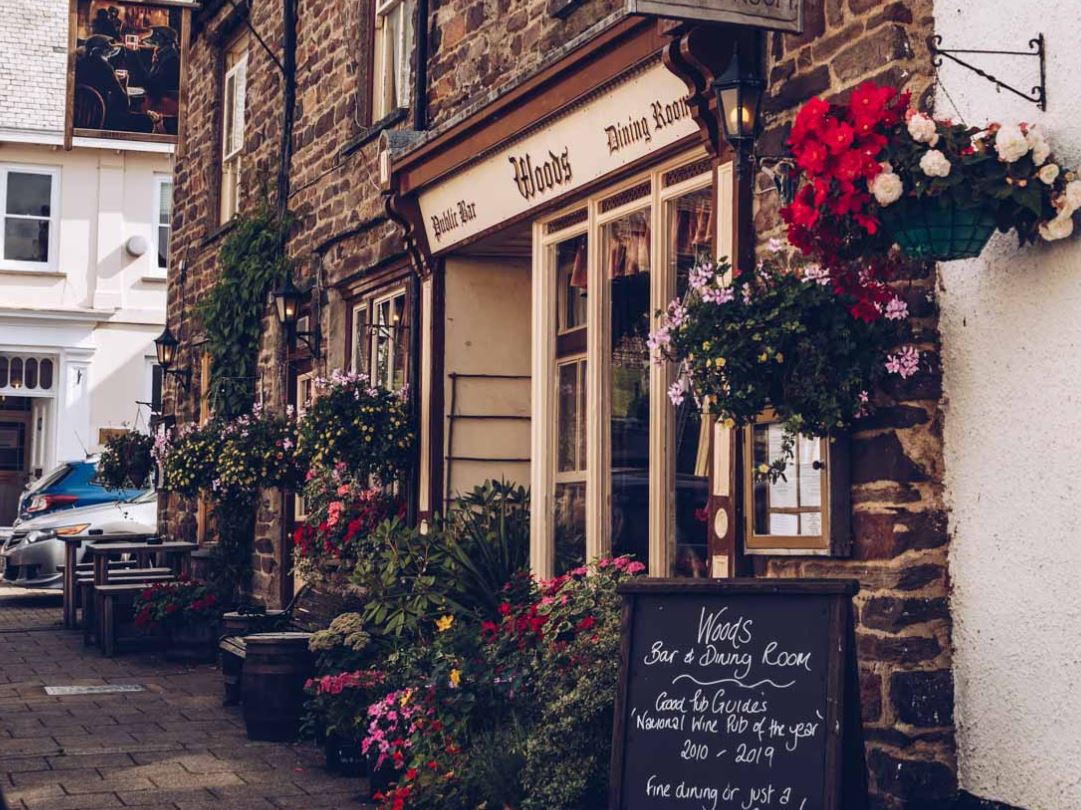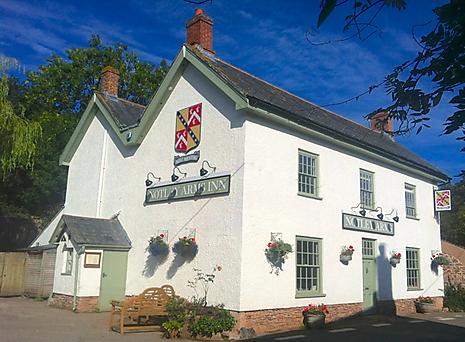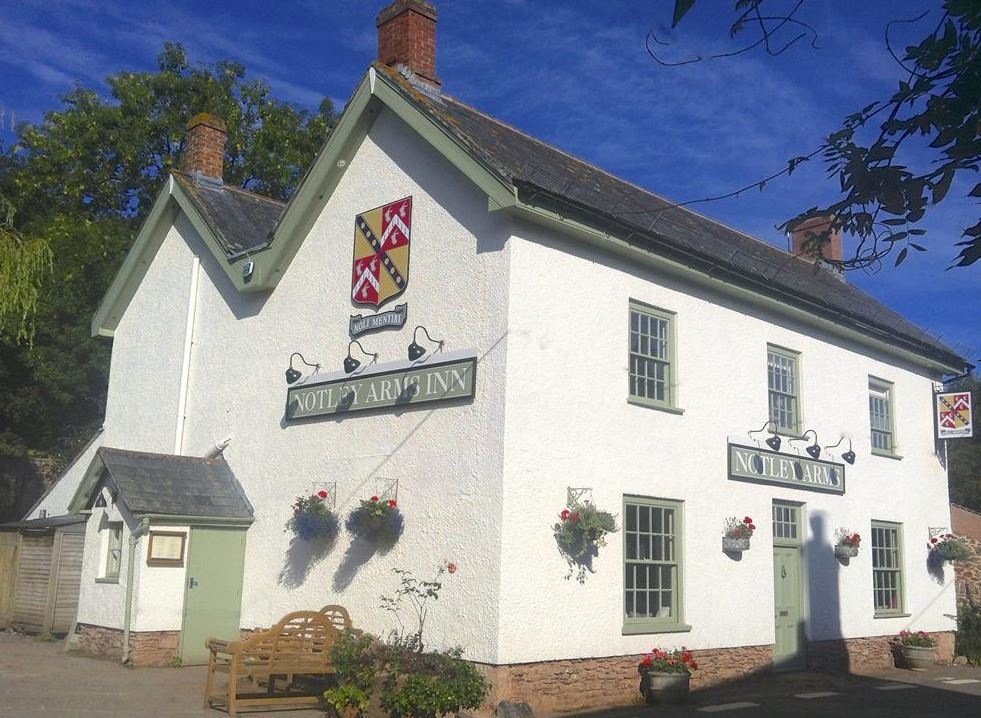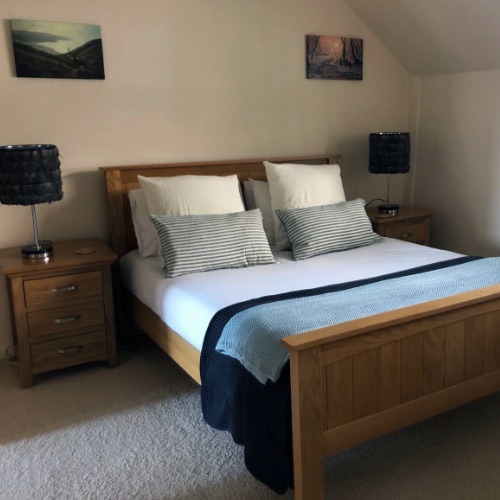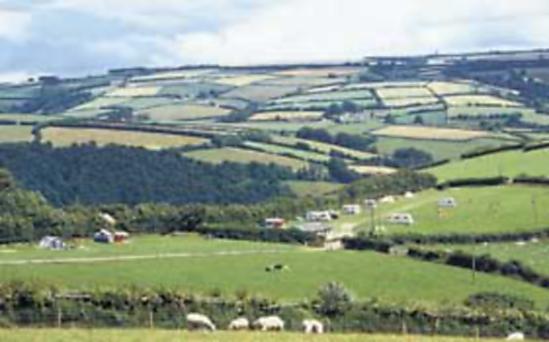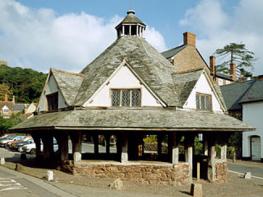Located in the heart of Exmoor, close to the River Exe and just a short walk from the centre of…
Withypool's river and common

A short walk up the wooded riverside and on to grassy moorland.
3.5 miles (5.7kms)
About the walk
The upper Barle Valley is the heart of Exmoor: not dramatic combes and sudden seaside, but a gentle and rather melancholy landscape. Withypool, with its wooded brook, lies below the long grass slopes and the bare moorland plateau; this walk follows the Barle and then gradually works its way up through the fields above, turning back at the edge of the moorland to return along the outside of the top of the enclosed lands.
Below the open moor
Exmoor hedges, separating the cultivated farmland and grazing from the open moor and one field from another, are both ancient and intricate, the product of generations of maintenance. The traditional Exmoor hedge grows on an earthy or stone bank, and can act as a border as well as stock-proofing – look out for solitary trees on a hedge-line; these often mark historic boundaries between different farms. Hedges are kept dense by traditional management in the form of regular laying and bank repair, and for farmers living inside the National Park this is a mandatory duty that’s overseen by the Park Authority. Laying and coppicing are normally done during the winter, when the sap is not rising; banking takes place whenever busy farmers can schedule it. Good husbandry like this means Exmoor will keep its historic hedges, iconic landscape features that provide shelter for crops and livestock and support wildlife of every type.
Moor natives
The bare moor and plateau is characterised by a quiet that may be broken by the occasional whinny of a pony. Ponies have been on Exmoor for longer than people; they are the closest there is to the original wild horse of Europe. A hundred years ago they came close to extinction. We have Sir Thomas Dyke Acland, the landowner who left Winsford Hill to the National Trust, to thank for their continued existence. Today there are only about 1,000 of these ponies in the world. The 150 ponies on Exmoor are in 11 herds, two of them in the care of the National Park Authority.
You are most likely to see ponies at quiet times of day. They live wild on the moors year-round. Evolution has given them a thick weatherproof coat, long mane, tough hooves, and a raised ridge around the eye (the so-called ‘toad’ eye) to cast off rain, as well as enough speed and endurance to escape from the sabre-toothed tiger that once hunted them. But every Exmoor pony belongs to someone and every autumn they are gathered, inspected for disease, micro-chipped and branded.
Walk directions
A small gate leads out of the car park to the River Barle. Turn left, following the river bank upstream. The waymarked path goes through a gate and over a footbridge, then passes through a gate into a short, hedged way. After a stile it follows the edge of two boggy fields, below the big shed of Waterhouse Farm, to a stile. Now bear slightly left to a stile with a hedged track (signed Withypool Hill) going uphill beyond.
This track is the return route. At the track foot turn right to a stile. Cross a field next to a railed fence on the right, with the river beyond. At the corner, cross a stone footbridge to a wooden one, and continue on the riverbank. Ignore two kissing gates on the left, but cross a stile ahead into an open field. At the end of this field turn uphill at a signpost on a faint path with a hedge on the right, to a corner gasp. Here another sign points towards Brightworthy Farm.
Pass through the gates immediately to the right of the buildings, into a fenced-off path round a field-edge. A bridge on the left leads to steps down on to an earth track. Turn right, and, as the track fades out, pass a concrete shed to follow the bottom edges of two fields. The moorland is one field above, and the river now about two fields below. Through a field gate in the corner, the trench of a track-way descends gently to a gate leading to the open moor.
From here you could extend your walk to the medieval Landacre Bridge, soon visible 0.5 miles (800m) ahead – a suitable place for a picnic. Otherwise turn left, following the sign for Withypool Common. A faint, rutted path runs along the moorside edge of the hedge that forms the boundary of the enclosed ground. After an initial climb, it bends left and levels off. The path gets clearer, and follows the hedge bank just below. It crosses a tarred driveway running down into fields. Soon after you encounter the steep-sided stream valley of Knighton Combe.
The path slants down to the right and crosses the stream at a shallow ford. Head downstream for about 100yds (91m) between rowans, then slant up the combe side to re-join the combe-top hedge. The path is now clear, running towards the road that runs down into Withypool.
About 220yds (201m) before the road turn down left to a stile with a yellow paint spot in a corner of the hedge. A lane, signed Withypool Hill, runs downhill to a gate. Cross this and the stile ahead to rejoin the outward route. Turn right and continue downstream to Withypool Bridge.
Additional information
Narrow riverside path, field paths and open moor, many stiles
Small moorland valley
Appropriate control over fields, riverside and moorland
AA Walker's Map 13 Exmoor
Small car park (free, busy on summer weekends) just across river from Withypool village
In village centre, opposite shop
WALKING IN SAFETY
Read our tips to look after yourself and the environment when following this walk.
Find out more
Also in the area
About the area
Discover Somerset
Somerset means ‘summer pastures’ – appropriate given that so much of this county remains rural and unspoiled. Ever popular areas to visit are the limestone and red sandstone Mendip Hills rising to over 1,000 feet, and by complete contrast, to the south and southwest, the flat landscape of the Somerset Levels. Descend to the Somerset Levels, an evocative lowland landscape that was the setting for the Battle of Sedgemoor in 1685. In the depths of winter this is a desolate place and famously prone to extensive flooding. There is also a palpable sense of the distant past among these fields and scattered communities. It is claimed that Alfred the Great retreated here after his defeat by the Danes.
Away from the flat country are the Quantocks, once the haunt of poets Samuel Taylor Coleridge and William Wordsworth. The Quantocks are noted for their gentle slopes, heather-covered moorland expanses and red deer. From the summit, the Bristol Channel is visible where it meets the Severn Estuary. So much of this hilly landscape has a timeless quality about it and large areas have hardly changed since Coleridge and Wordsworth’s day.
Nearby stays
Restaurants and Pubs
Nearby experiences
Recommended things to do
Why choose Rated Trips?
Your trusted guide to rated places across the UK
The best coverage
Discover more than 15,000 professionally rated places to stay, eat and visit from across the UK and Ireland.
Quality assured
Choose a place to stay safe in the knowledge that it has been expertly assessed by trained assessors.
Plan your next trip
Search by location or the type of place you're visiting to find your next ideal holiday experience.
Travel inspiration
Read our articles, city guides and recommended things to do for inspiration. We're here to help you explore the UK.


